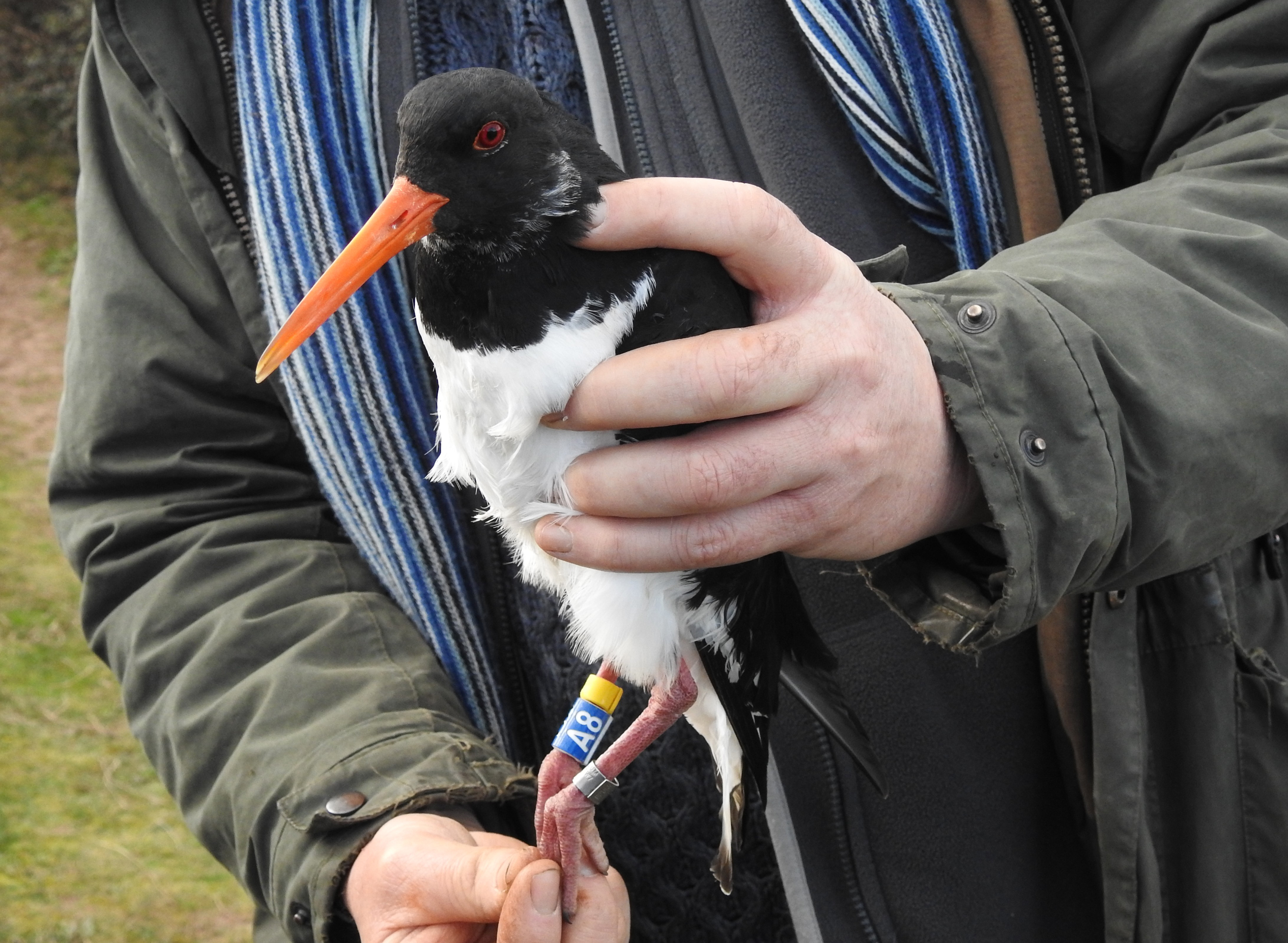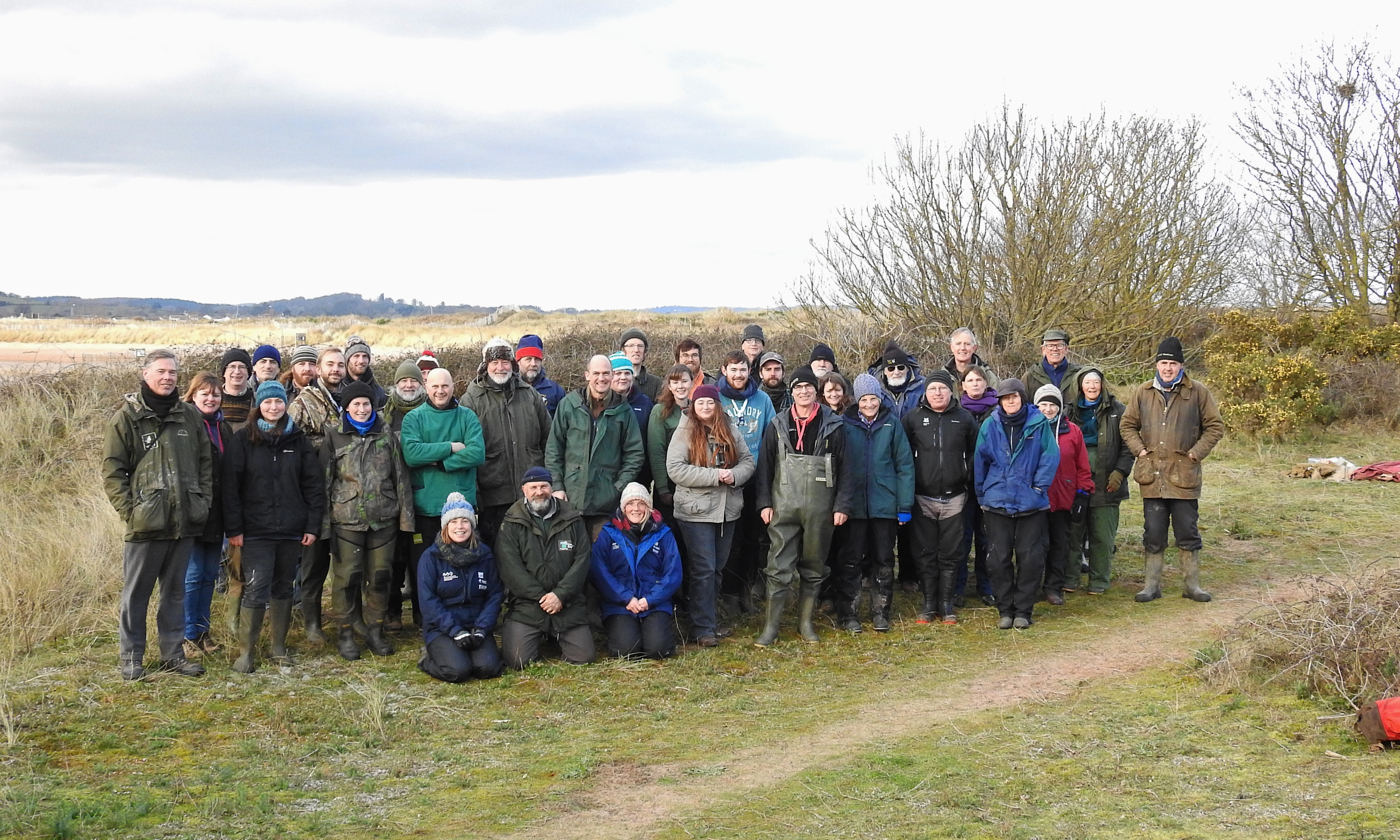Exe Estuary Oystercatcher Project
Updates - May 2018 Sep 2018 Jun 2019 Jun 2020
Your help
is needed to spot and report colour ringed oystercatchers
Any sightings of colour-ringed oystercatchers should be reported to
exeoystercatchers@gmail.com
On Sunday 4 February 2018, after months of planning a successful catch of 190 oystercatchers took place at Dawlish Warren National Nature Reserve. All birds were aged, weighed, measured and fitted with a uniquely coded metal ring before being safely released. 150 of these birds were also each fitted with a larger uniquely-coded colour ring, which can be read by observers at distance, allowing valuable information to be collected without having to re-catch or disturb the bird.
Exactly 150 oystercatchers were fitted with a blue ring engraved in white with a large alpha-numeric code, e.g. ‘U6’ or ‘2M’) on the right leg, read from the bottom up. Above the blue engraved ring is a plain yellow ring with a metal BTO ring on the left leg. If you see one of these birds, please look out for and note information on date, time, location (precise as possible with a grid reference), and its behaviour (feeding or roosting, in a flock or on its own).
Please send details of sightings of colour-ringed oystercatchers to: -
Thank you!

A bit of background
Dawlish Warren is part of the Exe Estuary which was
designated a Special Protection Area (SPA). It is a site of European importance
for a number of reasons, one is that it supported nationally important numbers
of wintering oystercatcher. Studies of this species on the Exe Estuary in 1970s
to 2000s represent one of the most comprehensive studies of a wading bird
conducted anywhere in the world. Despite the wealth of existing research, the
main drivers that influence the significant decline of oystercatcher on the Exe
Estuary in recent years are not well understood.
Over recent years the wintering Oystercatcher population has declined significantly in the UK, but this decline has been even greater on the Exe estuary. A number of factors are suspected to be causing this decline, some relate to the estuary, some at larger scales. This colour-ringing project should help determine what factors are causing the population decline; and to what extent birds from the SPA use the surrounding landscape. The results will help indicate what, if any, actions can undertaken to help reverse declines.
Oystercatchers are remarkably long-lived birds. Among the birds caught seven of them had previously been ringed at Dawlish Warren, six had been caught before in early 2000s but the oldest was ringed back in 1989, some 28 years ago.
These birds are faithful to wintering sites so the birds you have seen here years ago may be the same ones now. The oldest Warren Oystercatcher on record is at least 36 years old, last seen in Jan 2018. Therefore some of the birds ringed this year may still be on the Warren in 2054.
Thank you to Natural England for providing text for use in this page. Thanks also to Teignbridge District Council’s Rangers for their support and access; to Devon Wildlife Trust for access and to the team of 45 people including the 30 BTO licenced ringers, scribers and handlers who enabled such a successful start to the project.
